
All photos courtesy Google Images
My Kyoto Cats (Davd Duff)
Kuma and Kinta were my first Kyoto cats, both blazoned with that distinctive tabby ‘M’ arched above their soft green eyes. Both had the same mother but different fathers so Kuma was a short hair while Kinta sported fluffy long hair. We shared a traditional Japanese home together and savored every moment given us.
Cats have taught me many valuable lessons about life, none more praiseworthy than their own carefree, natural spontaneity that seems to elude so many of their two legged companions. Humans, myself included, are often hamstrung by the so-called rational mind, twisted into needless agony under the cruel auspices of logic. My cats help me loosen that Cartesian straitjacket, liberating my Tao essence.
Born and raised in sunny Southern California, both boys suffered in the frightfully cold feeling Kyoto winter. Me, right along with them. One pleasant aspect of the severe, arctic like conditions was that everyday Kinta eagerly sought out the warmth my lap generated. Sometimes, as I taught English downstairs, nestled snugly under that fabulous invention of the Japanese, the kotatsu, Kuma would join me, sitting right below the heater, not more than six inches away. Although the actual winter weather temperatures seem on the surface to be moderate, Kyoto somehow even has polar bears looking for a campfire on some of their colder nights.
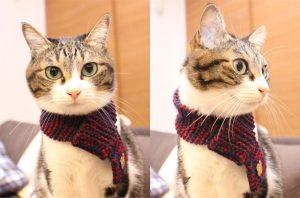 When we first settled in our Kyoto home, we often heard sounds of little feet pounding on the roof. The rapidity of their movements suggested the rodent family. Our boys would sit quietly by an open window, listening intently to the mice as they scurried back and forth. One day, a solitary mouse foolishly entered into the kitchen area, his last such adventure. Kinta pounced on him immediately and despite my best effort to save the reckless critter, died the following morning after I left him in a nearby shrine. We never heard the mice on the roof again. Kinta also rousted out a nasty centipede that had taken refuge in one of my book covers. These mukade, as they are called in Japanese, have quite a painful sting so I was grateful for his kind assistance.
When we first settled in our Kyoto home, we often heard sounds of little feet pounding on the roof. The rapidity of their movements suggested the rodent family. Our boys would sit quietly by an open window, listening intently to the mice as they scurried back and forth. One day, a solitary mouse foolishly entered into the kitchen area, his last such adventure. Kinta pounced on him immediately and despite my best effort to save the reckless critter, died the following morning after I left him in a nearby shrine. We never heard the mice on the roof again. Kinta also rousted out a nasty centipede that had taken refuge in one of my book covers. These mukade, as they are called in Japanese, have quite a painful sting so I was grateful for his kind assistance.
Both boys were more alert than busy airport traffic controllers when it came to flying objects, particularly flies. Sometimes they snatched them right out of the air in a remarkable display of agility. Other times they trapped them in corners, then hungrily devoured them.
Kuma enjoyed watching sumo with me but I was afraid he was trying to emulate the gigantic wrestlers. His weight had exploded since the first basho and he was nearing the twenty pound mark. More huggable but I worried about the danger of excess poundage. No neck Kuma. He always carried his tail straight up, proudly displaying it to all the world like porn star John Holmes’ 14 inch priapean member. His massive gut still hovered several inches above the ground so we hadn’t forced him on a crash diet yet. Undisputed lord of this old Kyoto dwelling, Kuma acted accordingly. Supremely self confident he strutted.
 Kinta, on the other hand, of a far more gentle disposition, suffered bullying from a three colored cat my first wife recused from the trash outside an apartment nearby. She gave this cat we called Cookie, who should have been named Cookie Monster, to her parents who lived with us. She had a personality more suited to a pit-bull than a house cat. In spite of the fact that she weighed less than half of what Kinta did, she chased him around the house, hounding him all hours of the day. Curiously, when the two of them were outside in our backyard garden, they were cordial to each other. The bullying was restricted to inside the house only. Must be some territory dispute I guessed. Cookie, however, groveled before Kuma, deferring to the true master of the house.
Kinta, on the other hand, of a far more gentle disposition, suffered bullying from a three colored cat my first wife recused from the trash outside an apartment nearby. She gave this cat we called Cookie, who should have been named Cookie Monster, to her parents who lived with us. She had a personality more suited to a pit-bull than a house cat. In spite of the fact that she weighed less than half of what Kinta did, she chased him around the house, hounding him all hours of the day. Curiously, when the two of them were outside in our backyard garden, they were cordial to each other. The bullying was restricted to inside the house only. Must be some territory dispute I guessed. Cookie, however, groveled before Kuma, deferring to the true master of the house.
I read somewhere that soldiers like dogs while artists prefer cats. An oversimplification but the more I thought about it the more it made sense. A dog’s slavish attention to man, like an obedient private following the barking of his sergeant, diminishes his appeal. I am not discounting the nobility of that loyalty and certainly not overlooking the dog’s usefulness to man. A long distinguished list indeed: Arctic dog teams, police dogs, dogs for personal protection, seeing eye dogs, and even some dogs that can sniff out cancer.
Cats march to no military band or blindly follow any orders. Our noble feline doesn’t heed commands from stuffy or finicky owners. Their own counsel guides them. That very independence adds to their aesthetic value, for a cat’s love can’t be demanded, it must be earned. Even then there’s no guarantee of success. It’s no wonder military types like Hitler and Napoleon had difficulty with cats. That roguish self-sufficiency attracts the free-spirited bohemian. Begotten to no man, the cat is a paragon of pride and dignity.
 I am certain that Descartes’s appallingly ignorant assertion that animals are only soulless ‘automata’, mindless machines without feeling, reflects a total lack of feline interaction. No cat owner would utter such balderdash. Of course, he was only following those misguided authors of Genesis who supposedly gave man dominion over all animals to do with as man desired. What incredible contempt. Some Christians have attempted to wriggle their way out of that biblical passage by arguing that dominion meant responsibility, not a license for abuse, but that is a minority viewpoint.
I am certain that Descartes’s appallingly ignorant assertion that animals are only soulless ‘automata’, mindless machines without feeling, reflects a total lack of feline interaction. No cat owner would utter such balderdash. Of course, he was only following those misguided authors of Genesis who supposedly gave man dominion over all animals to do with as man desired. What incredible contempt. Some Christians have attempted to wriggle their way out of that biblical passage by arguing that dominion meant responsibility, not a license for abuse, but that is a minority viewpoint.
My mother was a cat fanatic so right from birth I was surrounded by hairy bundles of love. We shared our home with anywhere from five to eight cats, along with several dogs as well. How my mother managed to keep the house clean and orderly with all those animals I will never know. Now, in my mid sixties, and never without a cat for a companion (except while in the Marines), have I ever spent a tedious or wearisome moment in a cat’s presence? No, impossible.
One day, a beat-up, badly injured, black tomcat stumbled into our carport. His right eye, damaged beyond repair in a vicious cat fight, hung loosely outside the socket, held only by a few strands of tissue. My mother rushed him to the vet and had him fixed up. With only his empty socket remaining we logically named him Cyclops. He always loved to have his hole scratched, I guess, like those amputees that still feel like itching the body part they no longer have.

My dad loved cats too and I think the shared appreciation of my parents helped keep our family together. They didn’t have much else in common. Dad would often carry his favorite cat on his shoulders when he strolled out to grab the morning paper. My parents were also hard drinking, festive folks who always gave the best parties, traits that were passed on to me, in addition to their passion for cats.
I am always learning new things about cats by diligent reading and close personal observation, although sometimes I wonder if I have been really paying attention as I didn’t notice until recently the M pattern above their eyes that all tabbies share. That was after staring right at it for decades. We see what we want to see. No more, no less. It makes me wonder what else I might have missed.
A close friend of mine, also a cat devotee, recently enlightened me about winking at cats, which at first I thought a bit silly. However, after experimenting with both Kuma and Kinta, I soon discovered such action anything but. Cat winking is a two eyed affair, with both eyes working in unison, not the one eyed version we men sometimes employ to catch the fancy of a lovely lady strolling by.
First you have to make eye contact with your targeted cat. Then, slowly, about every other second or so, blink both your eyes while maintaining rapture with your hairy companion. If love and trust are present betwixt the two of you, the cat’s eyes will gradually close as if it’s falling asleep. There’s something of a mesmerizing component to all this, a mutual hypnosis if you will. I want to try this on the bigger, more ferocious feline, the tiger. Would the winking produce the same result? “Tyger, Tyger, burning bright. In the forests of the night.”
 Divorce and my resulting relocation brought a sudden end to my wonderful relationship with my first Kyoto cats, Kuma and Kinta. Although I would not see them again, those cherished memories of the time we shared together will be with me forever. Thank you, boys!!
Divorce and my resulting relocation brought a sudden end to my wonderful relationship with my first Kyoto cats, Kuma and Kinta. Although I would not see them again, those cherished memories of the time we shared together will be with me forever. Thank you, boys!!
After the breakup of my marriage I moved to a funky, ivy covered, old wooden house in Shimogamo, just a stone’s throw from the Kamo River, where I still reside today. Almost 23 years in this magical village we call Kyoto, no sane man could ask for anything more. Barely a year into my new life here, Jiro appeared. A robust brown tiger tabby he was with shiny, yellow/greenish eyes. Obviously familiar with humans, he rambled right into my genkan and said hello with a fearless but friendly meow. Had his owners abandoned him, I wondered?
One day, while I was out teaching English, Jiro discovered an old cat door the previous tenant had installed in my back door. Impatient and upset that I hadn’t returned yet, he proceeded to rip open the Friskies and help himself to the crunchy delights. Since he was a very healthy tomcat I worried Jiro might spray his urine around my house so I covered up the cat door.
Well, the very next day coming home late after drinking with my sweetheart, Mayumi, I opened my front door and low and behold, Jiro was waiting for us. How the hell had he gotten in? And upstairs there was a suspicious indentation on my comfortable bed, just about the size and shape a sleeping cat would leave. The impudent intruder had been enjoying the luxury of my own bed. It turned out that Jiro, being as powerful as he is, had pried open the back door.
 Jiro’s weight, from all the tender loving care he has been receiving from me, has ballooned, his prominent belly proudly protruding. As charming as he is there is little doubt that he is coaxing food from other nearby residents. He is nestled in my lap as I now write about him, providing inspiration for my prose.
Jiro’s weight, from all the tender loving care he has been receiving from me, has ballooned, his prominent belly proudly protruding. As charming as he is there is little doubt that he is coaxing food from other nearby residents. He is nestled in my lap as I now write about him, providing inspiration for my prose.
Inseparable we are, Jiro and I. My house cat guard boy even follows me to the restroom occasionally, I guess, to make sure I am not molested by any of the various wildlife that share this old castle with us. Not only protecting my ‘jungle house,’ Jiro also acts as a backup alarm clock as he gets up about the same time I like to, around 5:30am, when he then proceeds to knock over a book or two or jump on my fax machine. Always an early breakfast time for my hardworking feline companion.
Shortly after he started living here, I had him fixed, not wanting him to suffer the same unfortunate fate that so many unneutered males suffer. Although he still tangles with the other toms in this neighborhood, the fights are nowhere near as violent as before, when Jiro was more than a match for even the most menacing tom rival.
Coming home after a lesson or having a beer or two, I often find Jiro waiting for me in the middle of the narrow road fronting my house. Recognizing the unique squeak from my bicycle, he springs to life and warmly greets me. Never had I cat that behaved so but then Jiro is one very special example of feline development.
Adding a few final comments on why cats so bedazzle, so arouse, and so galvanize me, I will conclude this earnest tribute dedicated to the Japanese cat. Of course, all cats, everywhere, are praiseworthy but somehow the Japanese people have found unique ways to show their profound love of the noble feline. Thank you, Japan.
When I am with my cat I feel the presence of the divine in every single stroke of its soft fur, hear the deafening roar of eternity in its thundering purr, and see the radiant glory of god in its sparkling eyes.
Cats are so instinctive, so intuitive, and so staunchly here and now, that they often remind me of the Japanese people. I say that despite knowing full well the heavy burdens that constrain them for they have managed to retain that naturalness synonymous with cats, especially the women.
To act in a free and spontaneous manner, in complete harmony with one’s natural essence, is something the cat does easier than any other creature I know. When they are hungry, they eat, when they are tired, they nap, and when they want to play, they play. Watching cats play is a joy without equal. Well, almost. If any animal is more like the Tao than the cat, they must live outside our solar system. I yearn to capture that elusive spirit and live like the cat.
For cat worshipers, Japan is the ultimate destination. There is something here for all types of feline lovers. Trust me, you will not be the least bit disappointed. Drop in to Kyoto and say Hello, or Meow if you like. Look me up on Facebook and let’s have a beer or two together, my cat admiring brothers and sisters. Cheers!
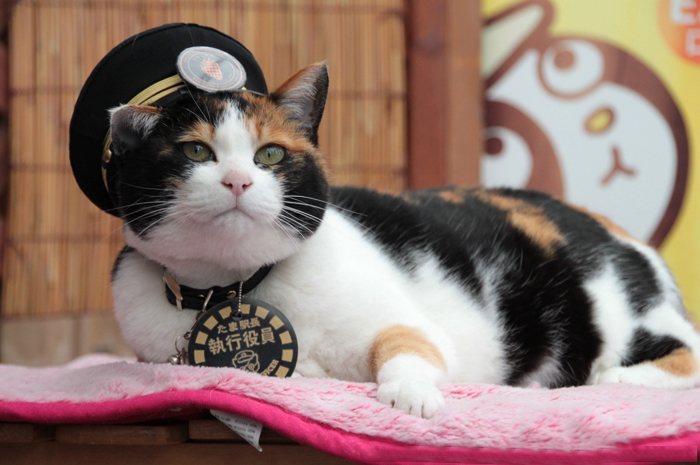
Tama-chan, station master, who became japan’s most famous cat
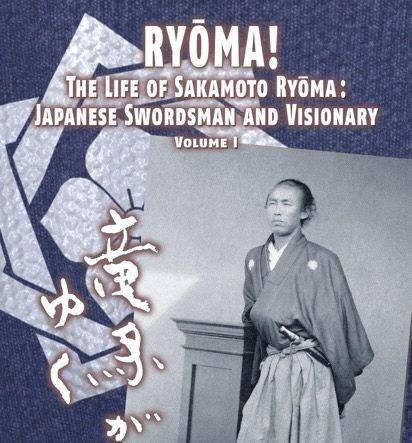
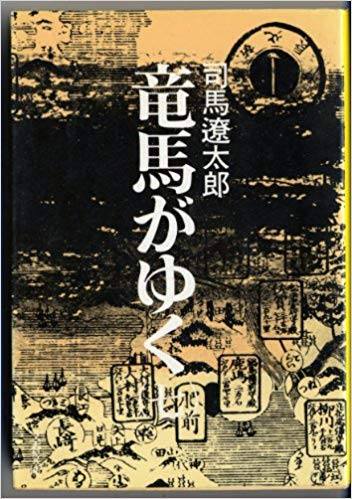 Even those readers who haven’t or are unable to read the original Japanese can very quickly tell what type of writer Shiba was. That being one who was expertly researched and informed, but not overly serious about the whole thing. Again, thanks to our translators here, Shiba’s voice becomes quickly recognizable.
Even those readers who haven’t or are unable to read the original Japanese can very quickly tell what type of writer Shiba was. That being one who was expertly researched and informed, but not overly serious about the whole thing. Again, thanks to our translators here, Shiba’s voice becomes quickly recognizable.
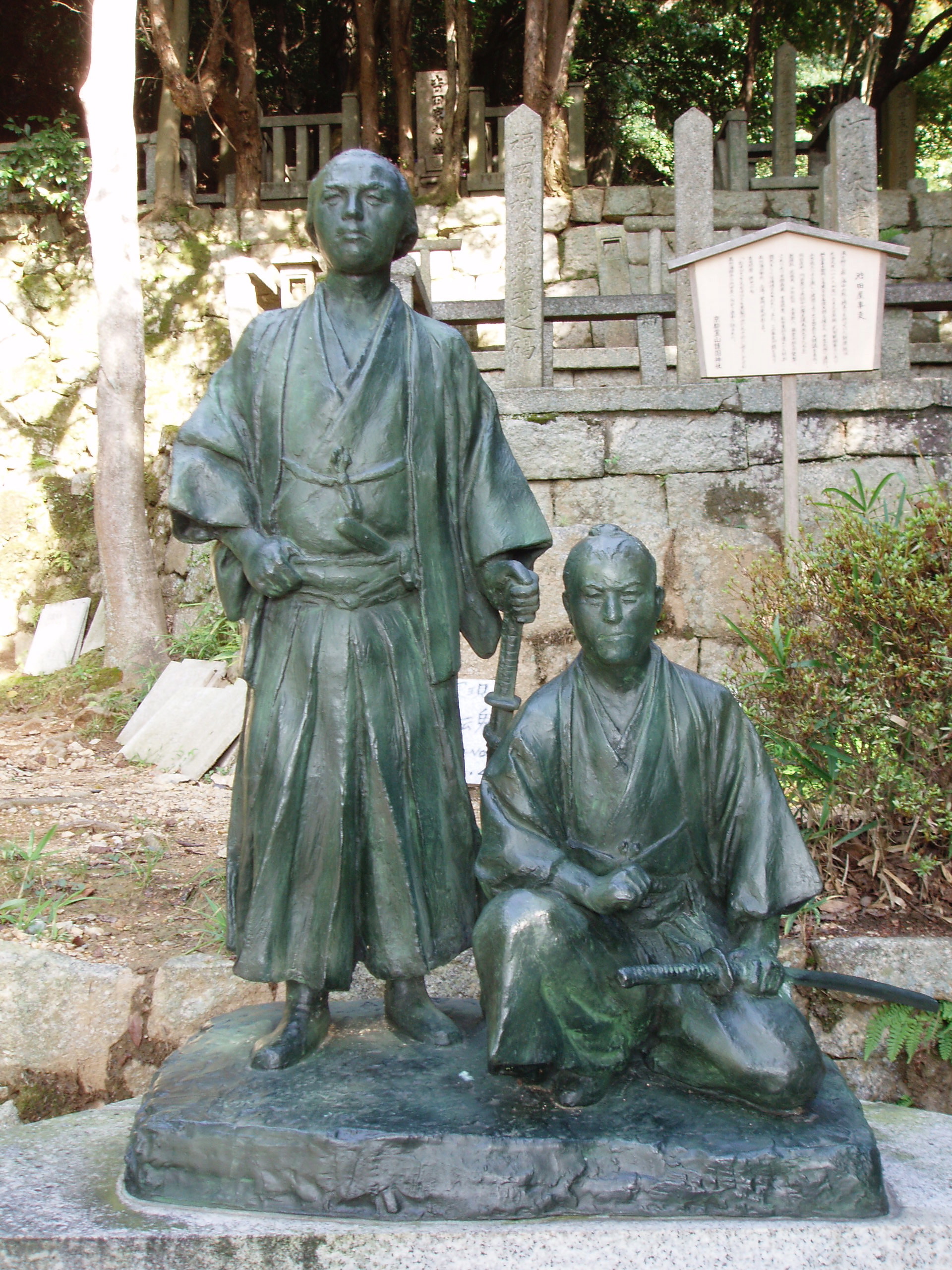

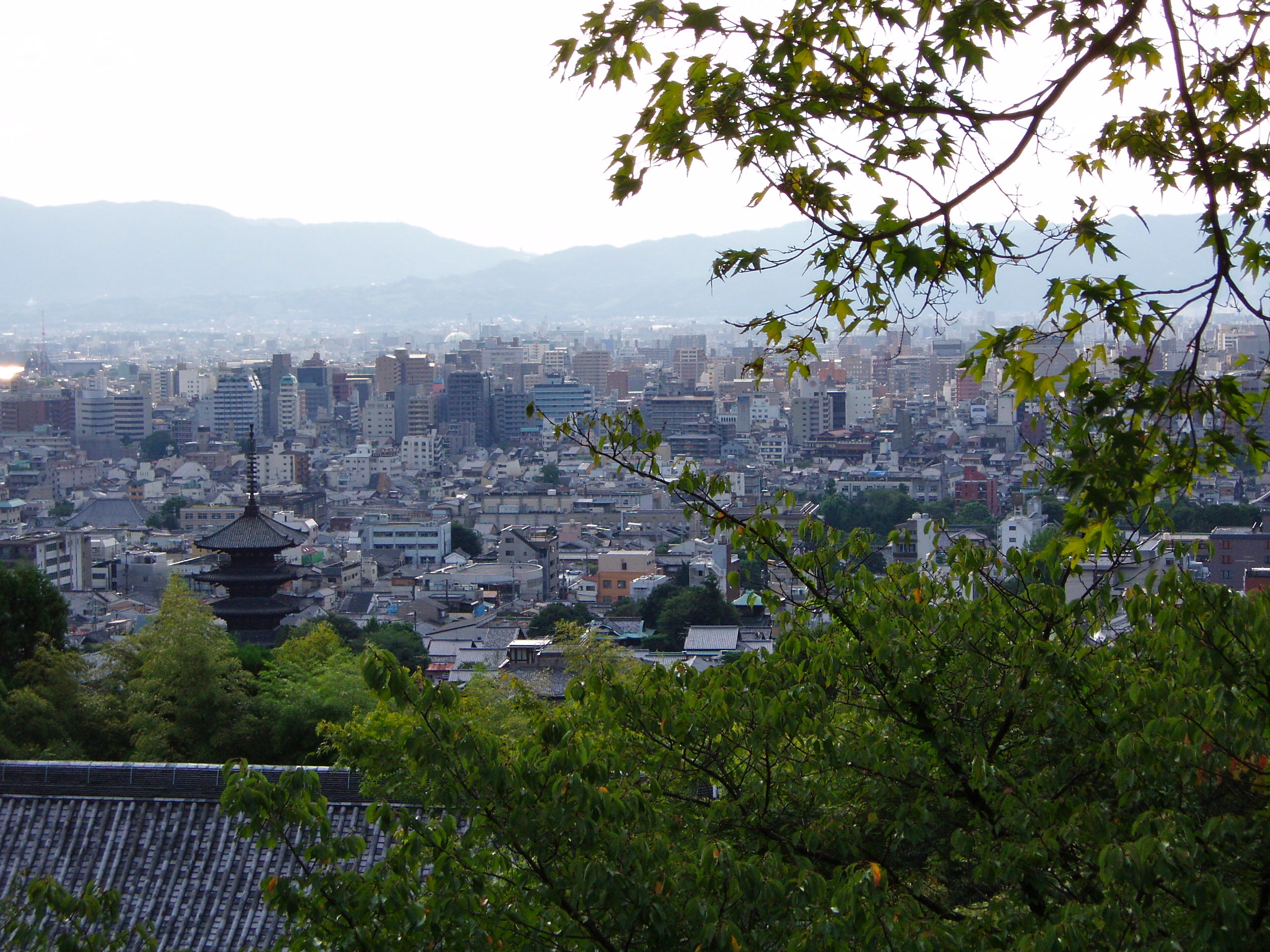

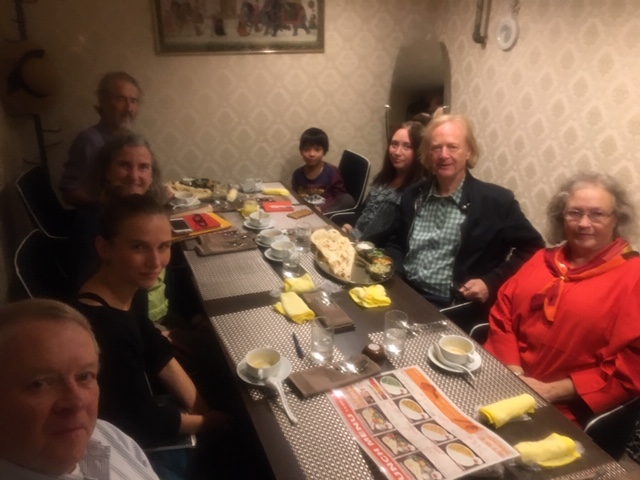

 The reason Jann chose to focus on Japan was largely to do with Shinto being the sole example of an animist religion still guiding the thinking of an industrialised country. She was also inclined to admiration of the aesthetics and values of Japanese culture, a feeling intensified with her experience of an Oomoto course she took. In many ways Japan is an obvious country in which to explore the elements because of its position on the ring of fire, meaning volcanoes, hot springs and earthquakes are common, as well as being in the typhoon belt with the consequences that brings.
The reason Jann chose to focus on Japan was largely to do with Shinto being the sole example of an animist religion still guiding the thinking of an industrialised country. She was also inclined to admiration of the aesthetics and values of Japanese culture, a feeling intensified with her experience of an Oomoto course she took. In many ways Japan is an obvious country in which to explore the elements because of its position on the ring of fire, meaning volcanoes, hot springs and earthquakes are common, as well as being in the typhoon belt with the consequences that brings.

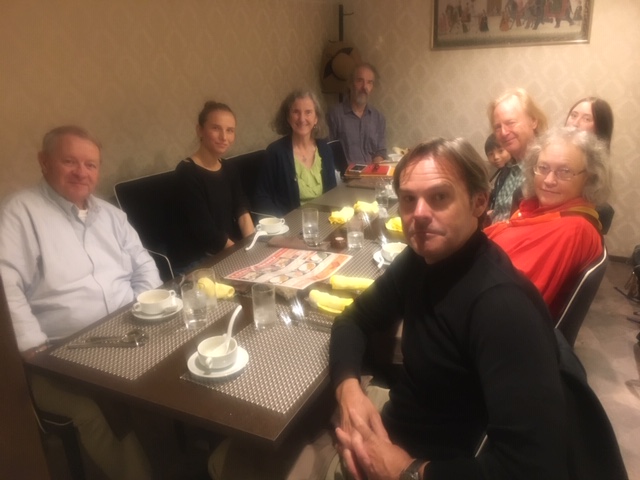







 When we first settled in our Kyoto home, we often heard sounds of little feet pounding on the roof. The rapidity of their movements suggested the rodent family. Our boys would sit quietly by an open window, listening intently to the mice as they scurried back and forth. One day, a solitary mouse foolishly entered into the kitchen area, his last such adventure. Kinta pounced on him immediately and despite my best effort to save the reckless critter, died the following morning after I left him in a nearby shrine. We never heard the mice on the roof again. Kinta also rousted out a nasty centipede that had taken refuge in one of my book covers. These mukade, as they are called in Japanese, have quite a painful sting so I was grateful for his kind assistance.
When we first settled in our Kyoto home, we often heard sounds of little feet pounding on the roof. The rapidity of their movements suggested the rodent family. Our boys would sit quietly by an open window, listening intently to the mice as they scurried back and forth. One day, a solitary mouse foolishly entered into the kitchen area, his last such adventure. Kinta pounced on him immediately and despite my best effort to save the reckless critter, died the following morning after I left him in a nearby shrine. We never heard the mice on the roof again. Kinta also rousted out a nasty centipede that had taken refuge in one of my book covers. These mukade, as they are called in Japanese, have quite a painful sting so I was grateful for his kind assistance. Kinta, on the other hand, of a far more gentle disposition, suffered bullying from a three colored cat my first wife recused from the trash outside an apartment nearby. She gave this cat we called Cookie, who should have been named Cookie Monster, to her parents who lived with us. She had a personality more suited to a pit-bull than a house cat. In spite of the fact that she weighed less than half of what Kinta did, she chased him around the house, hounding him all hours of the day. Curiously, when the two of them were outside in our backyard garden, they were cordial to each other. The bullying was restricted to inside the house only. Must be some territory dispute I guessed. Cookie, however, groveled before Kuma, deferring to the true master of the house.
Kinta, on the other hand, of a far more gentle disposition, suffered bullying from a three colored cat my first wife recused from the trash outside an apartment nearby. She gave this cat we called Cookie, who should have been named Cookie Monster, to her parents who lived with us. She had a personality more suited to a pit-bull than a house cat. In spite of the fact that she weighed less than half of what Kinta did, she chased him around the house, hounding him all hours of the day. Curiously, when the two of them were outside in our backyard garden, they were cordial to each other. The bullying was restricted to inside the house only. Must be some territory dispute I guessed. Cookie, however, groveled before Kuma, deferring to the true master of the house. I am certain that Descartes’s appallingly ignorant assertion that animals are only soulless ‘automata’, mindless machines without feeling, reflects a total lack of feline interaction. No cat owner would utter such balderdash. Of course, he was only following those misguided authors of Genesis who supposedly gave man dominion over all animals to do with as man desired. What incredible contempt. Some Christians have attempted to wriggle their way out of that biblical passage by arguing that dominion meant responsibility, not a license for abuse, but that is a minority viewpoint.
I am certain that Descartes’s appallingly ignorant assertion that animals are only soulless ‘automata’, mindless machines without feeling, reflects a total lack of feline interaction. No cat owner would utter such balderdash. Of course, he was only following those misguided authors of Genesis who supposedly gave man dominion over all animals to do with as man desired. What incredible contempt. Some Christians have attempted to wriggle their way out of that biblical passage by arguing that dominion meant responsibility, not a license for abuse, but that is a minority viewpoint.
 Divorce and my resulting relocation brought a sudden end to my wonderful relationship with my first Kyoto cats, Kuma and Kinta. Although I would not see them again, those cherished memories of the time we shared together will be with me forever. Thank you, boys!!
Divorce and my resulting relocation brought a sudden end to my wonderful relationship with my first Kyoto cats, Kuma and Kinta. Although I would not see them again, those cherished memories of the time we shared together will be with me forever. Thank you, boys!! Jiro’s weight, from all the tender loving care he has been receiving from me, has ballooned, his prominent belly proudly protruding. As charming as he is there is little doubt that he is coaxing food from other nearby residents. He is nestled in my lap as I now write about him, providing inspiration for my prose.
Jiro’s weight, from all the tender loving care he has been receiving from me, has ballooned, his prominent belly proudly protruding. As charming as he is there is little doubt that he is coaxing food from other nearby residents. He is nestled in my lap as I now write about him, providing inspiration for my prose.

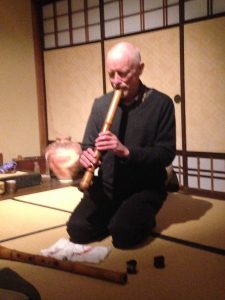
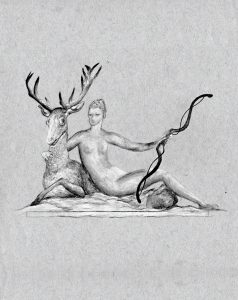
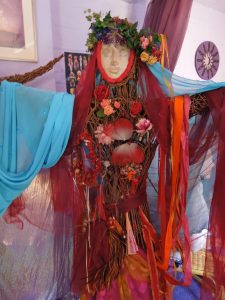
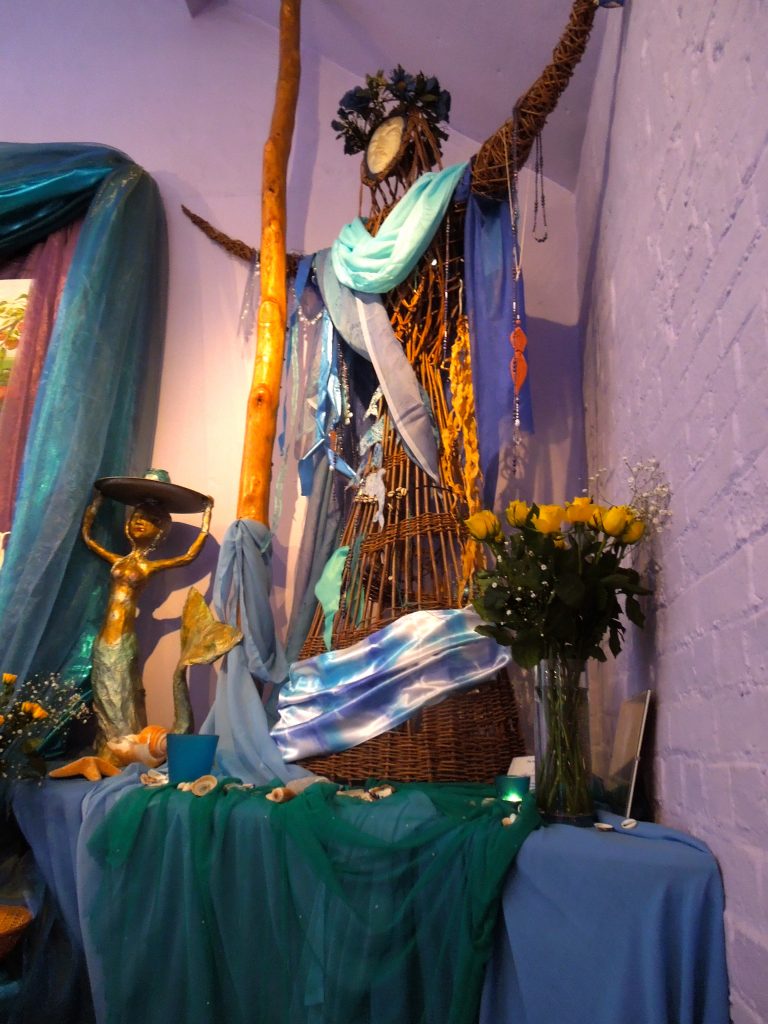






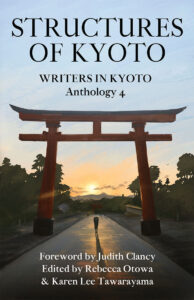


Recent Comments